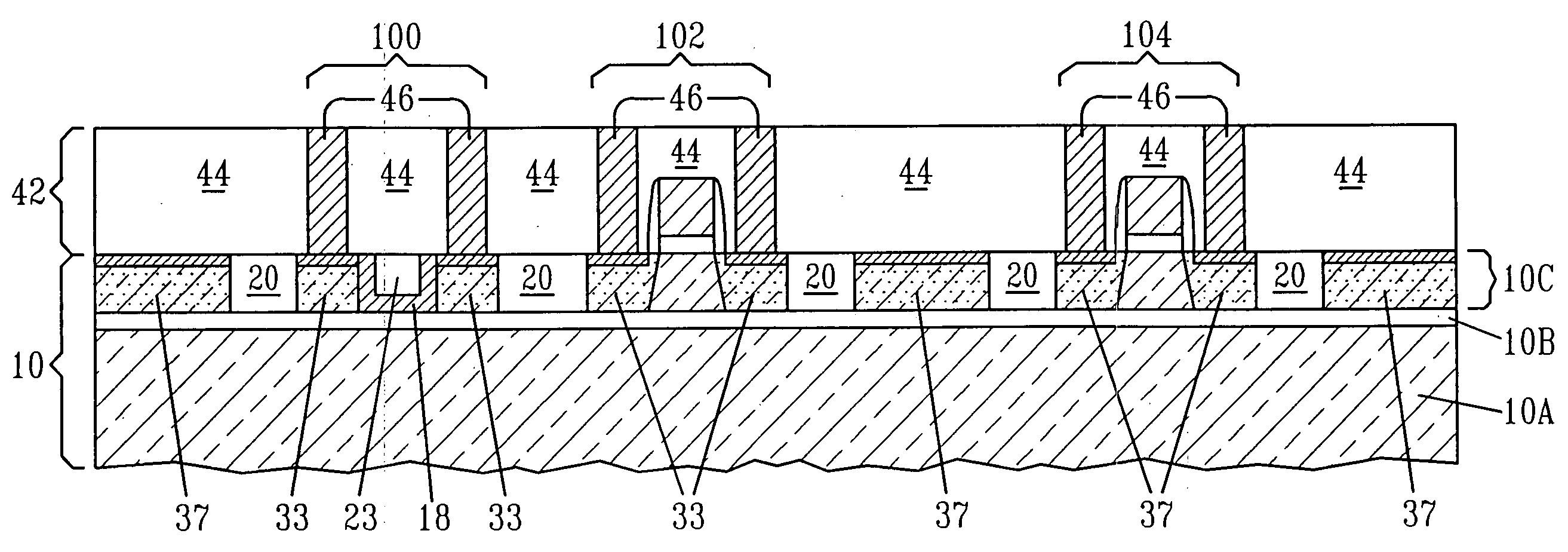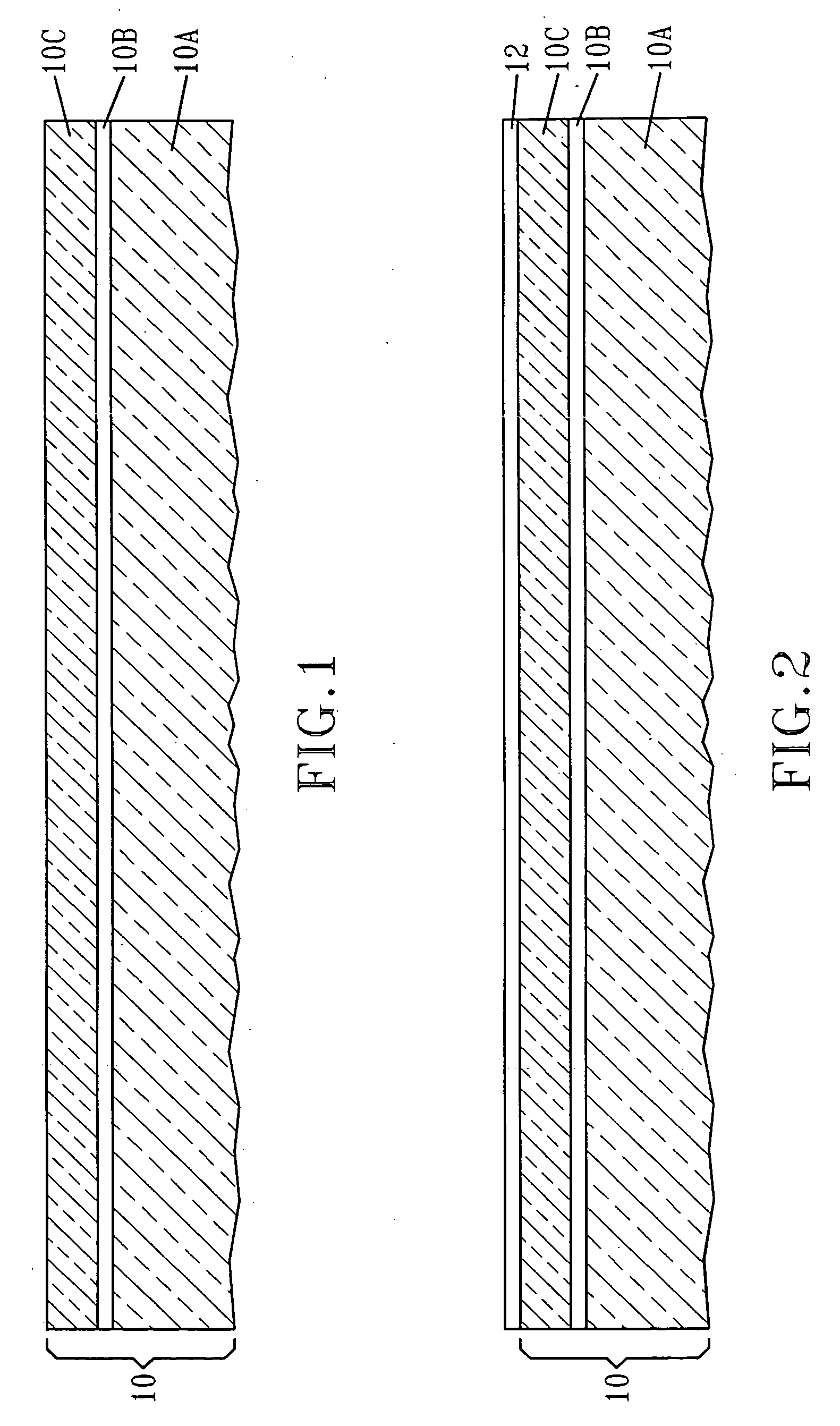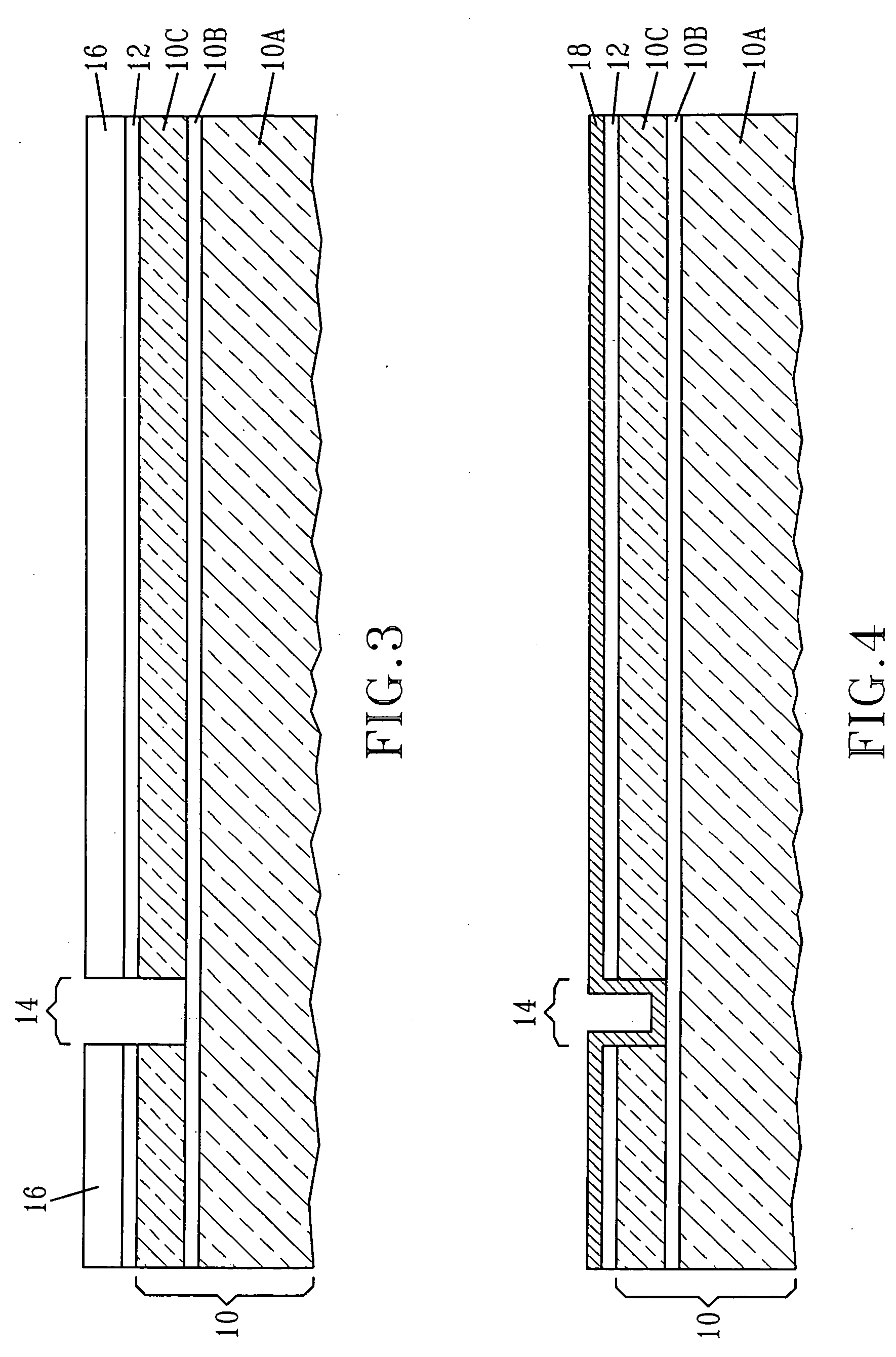CMOS compatible shallow-trench efuse structure and method
a shallow-trench, efuse technology, applied in the direction of semiconductor devices, semiconductor/solid-state device details, electrical apparatus, etc., can solve the problems of difficult to obtain a tight distribution of blow voltages derived from normal operating voltages, and the integration with standard complementary metal oxide semiconductor processing has been problematic, so as to achieve easy integration and minimize implementation costs
- Summary
- Abstract
- Description
- Claims
- Application Information
AI Technical Summary
Benefits of technology
Problems solved by technology
Method used
Image
Examples
second embodiment
[0048] Reference is now made to FIGS. 12-16 which are pictorial representations illustrating the basic processing steps used in the present invention. Particularly, and in the embodiment shown in FIGS. 12-16 a bulk semiconductor substrate 50 is used. The bulk semiconductor substrate 50 comprises at least one of the semiconductor materials mentioned in above in connection with the SOI substrate 10. The bulk semiconductor substrate 50 may comprise a single crystal orientation or it may contain surface regions that have different crystal orientations. The latter substrates are hybrid substrates which can be formed utilizing techniques well known in the art. The bulk semiconductor substrate 50 can be doped, undoped or contain doped and undoped regions. Likewise, the bulk semiconductor substrate 50 can be strained, unstrained or contain regions of both strain and unstrain therein.
[0049]FIG. 12 shows the bulk semiconductor substrate 50 including a nitride or oxynitride dielectric cap 12 o...
first embodiment
[0052] The remaining process steps as used in forming the fuse material 18 within the at least one opening 14 as described in the first embodiment above can now be employed. FIG. 16 depicts a portion of the bulk semiconductor substrate 50 that includes the e-fuse; note only the e-fuse location is shown in FIG. 16 and this drawing also does not show the presence of silicide region which are formed above each of the doped region. The latter omission was performed for clarity.
[0053] It is noted that the processing of the present invention, especially in regard to the first embodiment described above, provides an e-fuse material 18 inside the at least one opening 14 that presents a neck 110 at the bottom corners of the at least one opening 14. See, for example, FIG. 17. These necks result in current crowding during programming. When current pulse carries sufficient energy it can instantly generate a very high temperature in the vicinity of the neck regions and thus melt the fuse materia...
PUM
 Login to View More
Login to View More Abstract
Description
Claims
Application Information
 Login to View More
Login to View More - R&D
- Intellectual Property
- Life Sciences
- Materials
- Tech Scout
- Unparalleled Data Quality
- Higher Quality Content
- 60% Fewer Hallucinations
Browse by: Latest US Patents, China's latest patents, Technical Efficacy Thesaurus, Application Domain, Technology Topic, Popular Technical Reports.
© 2025 PatSnap. All rights reserved.Legal|Privacy policy|Modern Slavery Act Transparency Statement|Sitemap|About US| Contact US: help@patsnap.com



